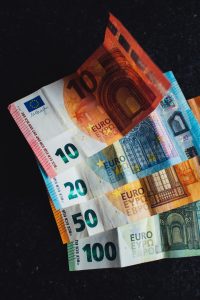Slippage is a common term used in forex trading that refers to the difference between the expected price of a trade and the actual execution price. In simple terms, it is the difference between the price at which a trader places an order and the price at which the order is executed. Slippage can occur in any market, but it is more common in the forex market due to its high volatility and liquidity.
Forex slippage occurs when the market moves quickly and there is a delay in executing the order. This is usually caused by a lack of liquidity in the market, which means that there are not enough buyers or sellers at a specific price point. As a result, the trader’s order is executed at a different price than the one they intended, resulting in slippage.
Slippage can occur in both buy and sell orders. In a buy order, slippage occurs when the trader gets filled at a higher price than the one they intended. In a sell order, slippage occurs when the trader gets filled at a lower price than the one they intended. Slippage can also occur in stop-loss orders, where the trader sets a price at which they want to exit a trade if the market moves against them. If the market moves quickly and the trader’s stop-loss price is not available, the order will be executed at the next available price, resulting in slippage.
Slippage can be a significant problem for forex traders, especially those who use automated trading systems or trade on news releases. Automated trading systems rely on fast execution times and precise entry and exit points. Slippage can cause the system to enter or exit trades at the wrong price, resulting in losses. News releases can cause significant volatility in the market, which can lead to slippage if the trader’s order is not executed quickly enough.
There are several factors that can contribute to slippage in forex trading. One of the main factors is market volatility. The more volatile the market, the more likely it is that slippage will occur. This is because there may not be enough buyers or sellers at a specific price point, causing the trader’s order to be executed at a different price.
Another factor that can contribute to slippage is order size. Large orders can be more difficult to execute, especially in markets with low liquidity. This is because large orders may require multiple buyers or sellers to fill, which can take time and cause the price to move against the trader.
Slippage can also occur due to technical issues such as slow internet connections or outdated trading platforms. These issues can cause delays in order execution, which can lead to slippage.
To minimize the risk of slippage, forex traders can use several strategies. One of the most effective strategies is to use limit orders instead of market orders. Limit orders allow traders to set a specific price at which they want to enter or exit a trade. This can help to minimize slippage by ensuring that the order is executed at the desired price.
Traders can also use stop-loss orders to limit their losses in case of slippage. Stop-loss orders allow traders to set a price at which they want to exit a trade if the market moves against them. This can help to limit losses in case of slippage.
In conclusion, slippage is a common problem in forex trading that can result in significant losses for traders. It occurs when there is a delay in executing an order due to a lack of liquidity, market volatility, or technical issues. To minimize the risk of slippage, traders can use limit orders, stop-loss orders, and other strategies to ensure that their orders are executed at the desired price.






